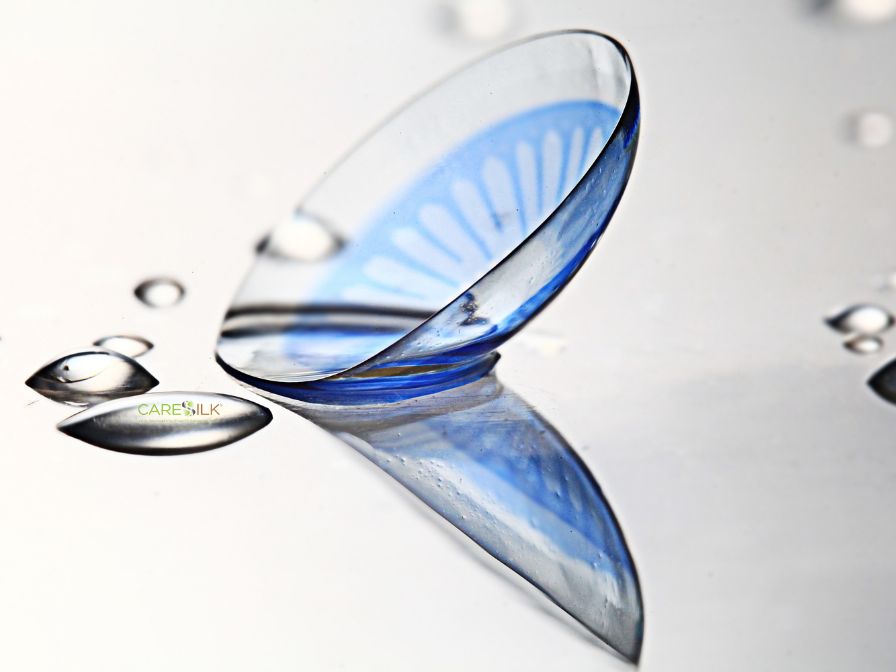Scientific research is exploring the possibilities offered by fibroin for advanced ophthalmic applications, with particular attention to biocompatibility and ocular comfort. The biotechnological approach to lens design represents a new frontier in the industry, where the demand for innovative and safe materials is constantly growing.
Structural properties of fibroin for ophthalmic applications
Fibroin is characterized by a complex protein structure that combines crystalline and amorphous regions, conferring interesting mechanical properties to the material combined with natural flexibility. The polypeptide chains of fibroin organize into a configuration that can maintain structural stability, an important characteristic for applications requiring durability over time.
The protein nature of fibroin gives it elastic properties that could be advantageous for ophthalmic applications. The ability to adapt to shape and the natural flexibility of the material represent characteristics potentially useful for comfort during contact lens use.
The biocompatibility of fibroin derives from its natural origin and protein composition, which makes it potentially compatible with biological tissues. As a naturally-derived material, fibroin presents characteristics that could reduce the risk of adverse reactions when used in ophthalmic applications. The interaction between fibroin-based materials and ocular tissues is the subject of scientific research, with studies exploring how these materials can integrate with the ocular environment. The surface of fibroin presents properties that could favor interaction with the tear film, an important aspect for ocular comfort.
Permeability and optical transmission
The structure of fibroin presents characteristics that could positively influence oxygen permeability, a crucial factor for corneal health during contact lens use. The nature of the material could allow adequate gas exchange, contributing to the maintenance of corneal physiology.
Optical transparency is indeed a fundamental requirement for any material intended for contact lenses. Fibroin, when properly processed, can maintain optical properties compatible with visual needs, allowing adequate light transmission for visual correction.
Manufacturing possibilities and development
The fabrication of fibroin contact lenses requires specialized technological processes that combine biotechnology and precision engineering. The process involves the extraction and purification of fibroin, followed by processing techniques to obtain the desired shapes and properties.
The resolution of all possible issues in production includes control of mechanical properties, standardization of production processes, and maintenance of optical quality. Research focuses on developing reliable methodologies for industrial-scale production while maintaining the beneficial characteristics of the material.
Potential clinical advantages
Fibroin-based materials could offer advantages in terms of ocular comfort thanks to their biocompatible nature. Research suggests that these materials could reduce some of the common problems associated with prolonged contact lens use, such as irritation and ocular dryness.
The stability of the material and its ability to maintain properties over time represent promising aspects for the development of more durable and comfortable contact lenses. However, thorough clinical studies are necessary to confirm these potential benefits. It is therefore clear that fibroin lenses can open various possibilities for specialized applications in ophthalmology, including the development of therapeutic lenses and devices for controlled drug release. The possibility of modifying fibroin properties through controlled processes offers opportunities for personalization of ophthalmic devices.
Future research will certainly focus on optimizing fibroin properties, developing advanced manufacturing technologies, and comprehensive clinical evaluation of these devices. The integration of innovative technologies could lead to the development of multifunctional ophthalmic systems.
Conclusion
The prospects for commercial development will depend on the ability to scale production processes, maintain product quality, and demonstrate clear clinical advantages over existing materials. Collaboration between academic research and industry will be essential for the success of this emerging technology.


